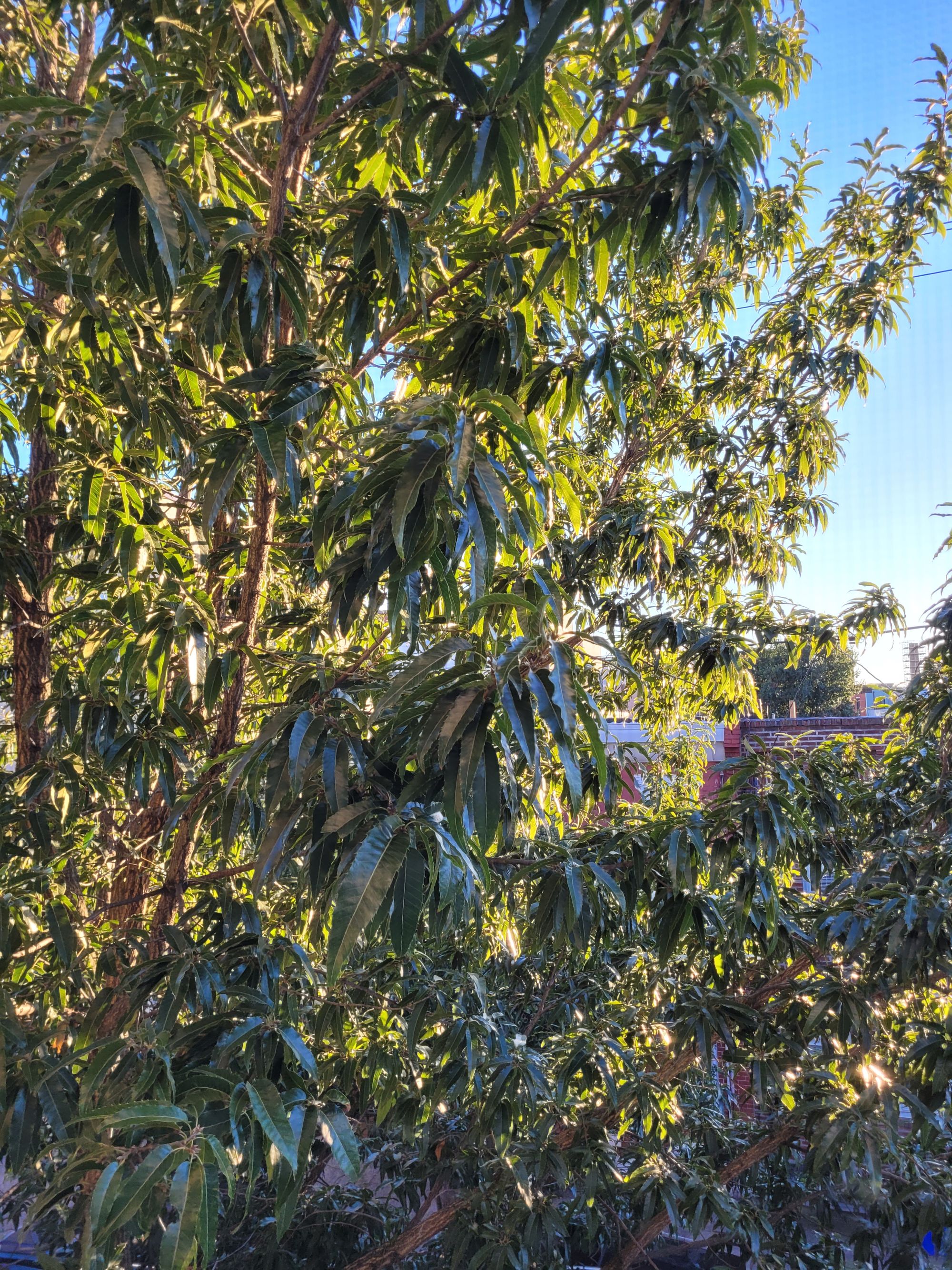An Ode to My Friend, Sawtoothy
I’ve become friends with a tree. We’ve built a bond over shared songs, drinks, time. We’ve grown close and almost entirely nonverbally. We both show each other our care and our growth. We both let others speak through us. We see each other eye to eye, branch to br

I’ve become friends with a tree. We’ve built a bond over shared songs, drinks, time. We’ve grown close and almost entirely nonverbally. We both show each other our care and our growth. We both let others speak through us. We see each other eye to eye, branch to branch, t4t[ree], and through it all I better know the feeling of pollination. This is an essay about Sawtoothy, my confidant, my kin.
I moved to this Fishtown/East Kensington/Olde Richmond rowhome in June 2020, fresh off of my entire world being ruptured and also the pandemic. I positioned my bed next to one of the two windows in my room, with not so much a “view” of the tall sidewalk tree out front as much as a scope. Its tendrilly branches wash the whole window in yellow-green, and when the breeze swirls through off the Delaware River the leaves stroke and scrape against the wire screen; a caress. An oaken exfoliation.
Sawtoothy is a Sawtooth Oak. I love their long, jaggedy leaves. Dense & fibrous & a little pokey, like dangerous tea. They are shaped like a wyrmtongue, like a child’s crayon drawing of a fire, like a black sheep banana leaf. I love their lil acorns nestled under their canopy of stamenic sproutings.
Neither me or Sawtoothy are from Philadelphia. I’ve got some settler ancestors who lived in the area after hopping on a boat from England, sure, but I was raised in the same part of the Missouri River valley along the Fishing River tributary that generations of settlers before me called home. The Sawtooth Oak is even further from origin; its original homelands found in the Himalayas and further into east & southeast Asia. Landscapers in the eastern United States started planting sawtooth oaks in the 1920s as a roadside tree, which is how my pal Sawtoothy came to wind up on the sidewalk of a residential street. It’s the only one on my block, which otherwise is dotted with chokecherries and hawthorns and serviceberries and Delaware elms.
Its been a popular planting in the deep south lately, because it drops its acorn crop early relative to other oaks. As the thinking goes, having sawtooth oaks around will encourage turkey and deer to visit sooner, both in terms of the early hunting season as well as in terms of sawtooths maturing faster from seedling to fruit-bearer than most native oaks. It shouldn’t be surprising at this point to hear that that shortcut mentality has consequences, that the sawtooth oak is increasingly being considered invasive in many counties. It’s so easy to blame a people for having its own labor exploited, for being partitioned off as decoration and buffer and daring to escape containment.
The Sawtooth Oak, or Kunugi, has folkloric-economic importance in Japan, especially in the Osaka, Nara, and Oita prefectures. Kunugi is intrinsic to sumi-demae, the ritual building of a hearth fire using charcoal for ceremonial tea service. Sawtooth oakwood dries out in a radial pattern akin to a many-spoked wagon wheel or an illustrated star. Its charcoal brings water to boil at exquisite timing, and it does so with a hauntingly gorgeous plum-red hue. Nowadays Sawtooth logs are also used to cultivate Shiitake mushrooms (after three years of providing a home for Shiitake growth the logs decay down and build up the soil, nourishing the Shicitoui grass (used for weaving traditional tatami mats). My favorite detail about Sawtooth Oak in Japanese folklore comes from the many stories of foxes – both corporeal and spirit – living harmoniously with humans in and around the town of Matsubara. One of these foxes lived by a pond off the Shimo-Koya highway, and this fox knew a special spell. She would place the leaves of a sawtooth oak on her head, spin around three times, and transform into a beautiful human lady, with water caltrops turning into hair jewelry and four o’clock flowers becoming her face of makeup.
I spent most of this year housebound -- in bed for the most part -- with various maladies from the long covid-complex. Tachycardia, joint pain, brain fog, a couple migraines each week. I’m not trying to write about pain here. I’m mostly just trying to write, trying to piece sentences together with a brain that runs clunkier than it used to. I mean to write about a small gratitude lining my bed rest in silver: our nonverbal communication. This year I have really embraced my selective mutism. Even as a kid I’ve always had extensive stints of verbal silence, for which I learned to make masks after suffering through various corrective violences. I learned how to use my voice so effectively that its gotten me paid through teaching and through performance. But mostly I don’t like to talk out loud. So I wasn’t really doing Discord calls with people from my bed. I wasn’t teaching last spring semester. My voice got to take a deep rest. And in that rest, I learned leaf language.
Sawtoothy doesn’t have vocal cords because Sawtoothy is a literal tree. But they speak to me in other ways, and I to them. They bridge me greetings from birds and squirrels and bees. We share the smell of incense burning by my open bedroom window. I sit on the sidewalk in the morning and share a cup of coffee with them, pour water onto their roots. I place my palm onto their furrowed bark and focus my gratitude towards them. I believe that they receive it. I believe that they reciprocate it. My experience tells me as such. I’ve learned the sound of wind rustling through them, and how those sounds correspond to barometric pressure – which is to say I have learned to hear when Sawtoothy is warning me ahead of time about a low pressure system coming through & to prepare for joint pain. I don’t care that there’s a completely materialistic, non-agentic lens to view our friendship through. You don’t know Sawtoothy like I do. Sawtoothy speaks to me and I know because I took the time to listen.
My friend is teaching me to use their fruit. Acorn powder can be used to great nutritional effect in cooking and baking, though you have to learn to use water to leech the astringent tannins. There’s a Korean dish called Dotorimuk, which is a seasoned acorn jelly traditionally made from the lil acorns from sawtooth oaks, served with lettuce, cucumber, carrot, a couple chilies, some perilla leaves, and chrysanthemum greens. I can supplement the small bounty that Sawtoothy affords me with store-bought acorn powder. I want to learn the temperatures that Sawtoothy’s acorns like to bake at, I want to introduce their powder to different yeasts. I want to bake small toothsome loaves of bread and offer them to my gods, ancestors, and spirit neighbors. I want to offer Dotorimuk to them as well; I want to foster connection through distance and space; I want to be hospitable to Sawtoothy at the same time that they help me feel more rooted, more at home.
What I mean to say is that your neighbors will surprise you if you get to know them. What I mean to say is that the other-than-human persons around you will listen to your story if you tell it. Don’t you wanna hear theirs as well?
